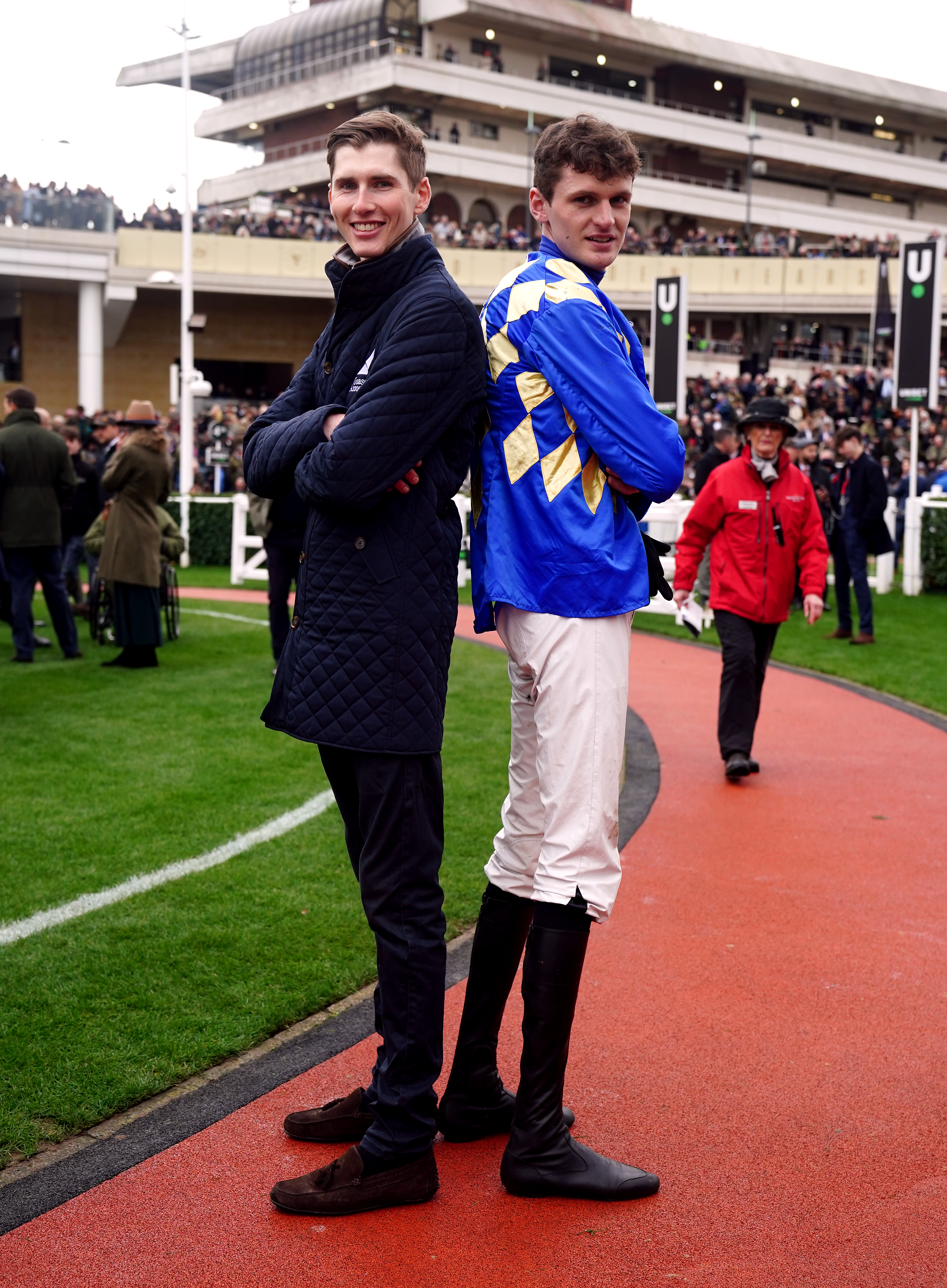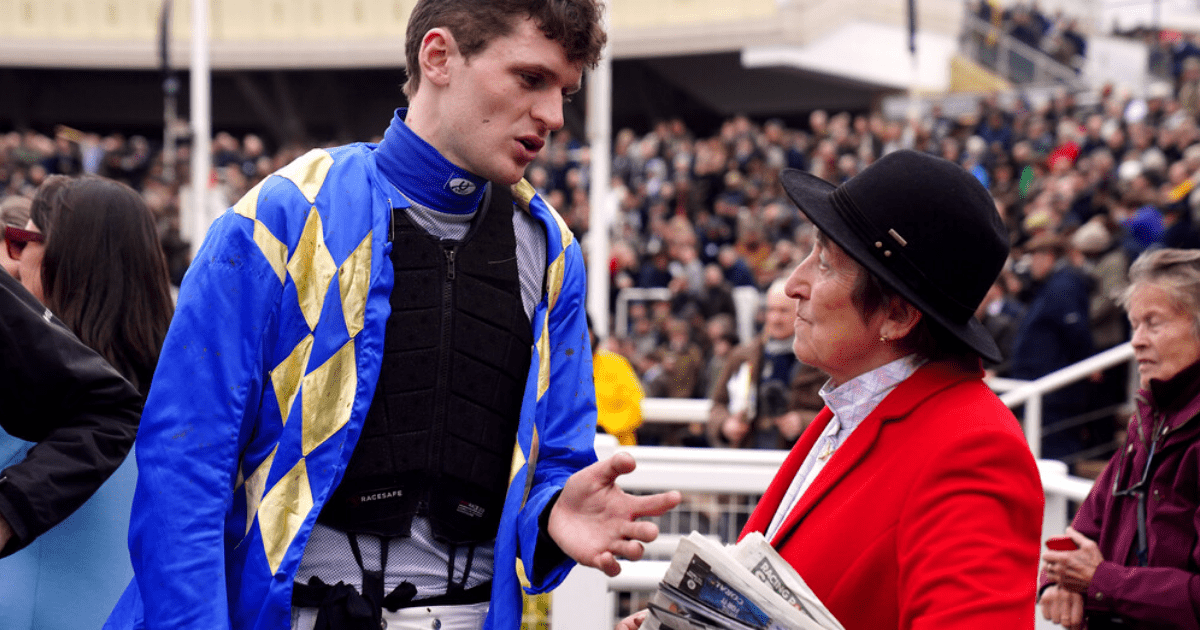Towering Presence
Thomas Costello, standing at 6ft4, made waves at the Cheltenham Festival with his debut in the Supreme Novices' Hurdle.
Unexpected Turn
Despite finishing fourth with Asian Master, some spectators were momentarily misled when ITV mistakenly displayed the 'Asian Master' graphic as the winner.
Overcoming Challenges
Costello, at 22, showcased his potential as a top jockey, despite struggles with weight management. In an interview, he shared his regimen and the hurdles he faces in the competitive world of horse racing.
Standing Tall
Costello's journey in the racing realm hasn't been without its challenges, including adjusting to the curious looks due to his towering stature. However, his talent is undeniable, earning him respect in the stables.

Frequently Asked Questions
What’s the first step when training a racehorse?
Breaking is an important part of the initial phase of training racehorses. This involves the horse becoming accustomed carrying a bridle, saddle, and weight of a person. In these early sessions patience and gentle treatment are essential to ensure that the horse becomes comfortable with humans and the equipment he will wear during his racing career.
What type of diet is ideal for racing horses?
The diet of a racehorse must be balanced and high-quality to meet the demands for energy during training and racing. The diet is usually a mixture of high-quality hay, grains like oats and barley, as well as commercially prepared racehorse feed. A diet that is rich in essential vitamins, minerals and nutrients will support the horse’s health and help them perform at their best.
Can you train a racehorse on any track?
Although initial training can be done on any track, race-specific training is often required in facilities that mimic the conditions the horse may face during competition. The horse must be trained on a track that is the same size and has the same surface as the racetrack. By using the right track, you can condition your horse properly and help them get used to the racing environment.
Is there a need for a specific shoe on a racing horse?
Racehorses typically wear specialized shoes called racing plates, which are lighter and thinner than regular horseshoes. These plates reduce weight and provide traction at the racetrack. A farrier skilled in working with racehorses will carefully select and fit these shoes to match each horse’s hoof conformation and the specific racing surface they will be running on.
Are there different race training methods for different horse breeds?
It is true that race training can differ for different horse races, due to the differences in breed characteristics and distances. Thoroughbreds and Quarter Horses undergo different types of training. Thoroughbreds excel at long-distance flat races, while Quarter Horses excel in sprinting. Each breed is unique and requires a different approach to match their physical characteristics and behaviors.
What is the importance of a horse’s pedigree to racing success?
Although pedigree may be a sign of potential, it does not determine a racehorse’s success. Lineage may indicate that a racehorse has inherited an aptitude for speed or durability, but other factors like training, temperament and health are equally important. Good training will maximize a horses natural abilities and may even enable it to outperform those with more impressive bloodlines.
Statistics
- The average racehorse reaches its peak physical ability between the ages of four to five, with some variation based on the breed and individual development.
- The majority of racehorses in training are subject to an exercise regimen that includes being ridden six days a week.
- Studies suggest that proper early training can reduce the risk of musculoskeletal injuries in racehorses by up to 50%.
- Gastrointestinal issues affect up to 90% of racehorses during their training, emphasizing the need for careful dietary management.
- The average cost to train a thoroughbred racehorse for one year can exceed $50,000, accounting for expenses related to training, boarding, and veterinary care.
- Racehorse mortality rates during racing have been observed to be between 1.5 to 2 deaths per thousand starts, depending on the racing jurisdiction.
External Links
paulickreport.com
theridinginstructor.net
jockeyclub.com
thoroughbred-racing.net
grayson-jockeyclub.org
racingpost.com
How To
How to Mentally Motivate a Racehorse during Training
Keep a racehorse mentally stimulated by providing a variety of environments and workouts to prevent boredom and stress. In addition to trackwork, you can also do outdoor exercises and trail rides. Introducing new commands or exercises can engage the horse. Allowing social interactions with other horses and establishing a bond with handlers contributes positively to the horse’s mental state. A horse that is mentally satisfied will be more cooperative and focused during training and racing.

